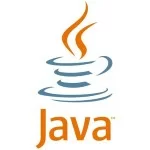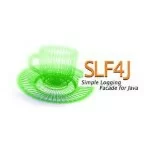Building a RESTful Web Service with Spring 3.1 and Java based Configuration, part 2
1. Overview
This article shows how to set up a REST in Spring – the Controller and HTTP response codes, configuration of payload marshalling and content negotiation.
2. Understanding REST in Spring
The Spring framework supports 2 ways of creating RESTful services:
- using MVC with ModelAndView
- using HTTP message converters
The ModelAndView approach is older and much better documented, but also more verbose and configuration heavy. It tries to shoehorn the REST paradigm into the old model, which is not without problems. The Spring team understood this and provided first-class REST support starting with Spring 3.0.
The new approach, based on HttpMessageConverter and annotations, is much more lightweight and easy to implement. Configuration is minimal and it provides sensible defaults for what you would expect from a RESTful service. It is however newer and a a bit on the light side concerning documentation; what’s more, the reference doesn’t go out of it’s way to make the distinction and the tradeoffs between the two approaches as clear as they should be. Nevertheless, this is the way RESTful services should be build after Spring 3.0.
3. The Java configuration
1 2 3 4 5 | @Configuration@EnableWebMvcpublic class WebConfig{ //} |
The new @EnableWebMvc annotation does a number of useful things – specifically, in the case of REST, it detect the existence of Jackson and JAXB 2 on the classpath and automatically creates and registers default JSON and XML converters. The functionality of the annotation is equivalent to the XML version:
<mvc:annotation-driven />
This is a shortcut, and though it may be useful in many situations, it’s not perfect. When more complex configuration is needed, remove the annotation and extend WebMvcConfigurationSupport directly.
4. Testing the Spring context
Starting with Spring 3.1, we get first-class testing support for @Configuration classes:
01 02 03 04 05 06 07 08 09 10 | @RunWith( SpringJUnit4ClassRunner.class )@ContextConfiguration( classes = { ApplicationConfig.class, PersistenceConfig.class }, loader = AnnotationConfigContextLoader.class )public class SpringTest{ @Test public void whenSpringContextIsInstantiated_thenNoExceptions(){ // When }} |
The Java configuration classes are simply specified with the @ContextConfiguration annotation and the new AnnotationConfigContextLoader loads the bean definitions from the @Configuration classes.
Notice that the WebConfig configuration class was not included in the test because it needs to run in a Servlet context, which is not provided.
5. The Controller
The @Controller is the central artifact in the entire Web Tier of the RESTful API. For the purpose of this post, the controller is modeling a simple REST resource – Foo:
01 02 03 04 05 06 07 08 09 10 11 12 13 14 15 16 17 18 19 20 21 22 23 24 25 26 27 28 29 30 31 32 33 34 35 36 37 38 39 40 41 42 | @Controller@RequestMapping( value = "foo" )class FooController{ @Autowired IFooService service; @RequestMapping( method = RequestMethod.GET ) @ResponseBody public List< Foo > getAll(){ return service.getAll(); } @RequestMapping( value = "/{id}", method = RequestMethod.GET ) @ResponseBody public Foo get( @PathVariable( "id" ) Long id ){ return RestPreconditions.checkNotNull( service.getById( id ) ); } @RequestMapping( method = RequestMethod.POST ) @ResponseStatus( HttpStatus.CREATED ) @ResponseBody public Long create( @RequestBody Foo entity ){ RestPreconditions.checkNotNullFromRequest( entity ); return service.create( entity ); } @RequestMapping( method = RequestMethod.PUT ) @ResponseStatus( HttpStatus.OK ) public void update( @RequestBody Foo entity ){ RestPreconditions.checkNotNullFromRequest( entity ); RestPreconditions.checkNotNull( service.getById( entity.getId() ) ); service.update( entity ); } @RequestMapping( value = "/{id}", method = RequestMethod.DELETE ) @ResponseStatus( HttpStatus.OK ) public void delete( @PathVariable( "id" ) Long id ){ service.deleteById( id ); }} |
The Controller implementation is non-public – this is because there is no need for it to be. Usually the controller is the last in the chain of dependencies – it receives HTTP requests from the Spring front controller (the DispathcerServlet) and simply delegate them forward to a service layer. If there is no use case where the controller has to be injected or manipulated through a direct reference, then I prefer not to declare it as public.
The request mappings are straightforward – as with any controller, the actual value of the mapping as well as the HTTP method are used to determine the target method for the request. @RequestBody will bind the parameters of the method to the body of the HTTP request, whereas @ResponseBody does the same for the response and return type. They also ensure that the resource will be marshalled and unmarshalled using the correct HTTP converter. Content negotiation will take place to choose which one of the active converters will be used, based mostly on the Accept header, although other HTTP headers may be used to determine the representation as well.
6. Mapping the HTTP response codes
The status codes of the HTTP response are one of the most important parts of the REST service, and the subject can quickly become very complex. Getting these right can be what makes or breaks the service.
6.1. Unmapped requests
If Spring MVC receives a request which doesn’t have a mapping, it considers the request not to be allowed and returns a 405 METHOD NOT ALLOWED back to the client. It is also good practice to include the Allow HTTP header when returning a 405 to the client, in order to specify which operations are allowed. This is the standard behavior of Spring MVC and does not require any additional configuration.
6.2. Valid, mapped requests
For any request that does have a mapping, Spring MVC considers the request valid and responds with 200 OK if no other status code is specified otherwise. It is because of this that controller declares different @ResponseStatus for the create, update and delete actions but not for get, which should indeed return the default 200 OK.
6.3. Client error
In case of a client error, custom exceptions are defined and mapped to the appropriate error codes. Simply throwing these exceptions from any of the layers of the web tier will ensure Spring maps the corresponding status code on the HTTP response.
1 2 3 4 5 6 7 8 | @ResponseStatus( value = HttpStatus.BAD_REQUEST )public class BadRequestException extends RuntimeException{ //}@ResponseStatus( value = HttpStatus.NOT_FOUND )public class ResourceNotFoundException extends RuntimeException{ //} |
These exceptions are part of the REST API and, as such, should only be used in the appropriate layers corresponding to REST; if for instance a DAO/DAL layer exist, it should not use the exceptions directly. Note also that these are not checked exceptions but runtime exceptions – in line with Spring practices and idioms.
6.4. Using @ExceptionHandler
Another option to map custom exceptions on specific status codes is to use the @ExceptionHandler annotation in the controller. The problem with that approach is that the annotation only applies to the controller in which it is defined, not to the entire Spring Container, which means that it needs to be declared in each controller individually. This quickly becomes cumbersome, especially in more complex applications which many controllers. There are a few JIRA issues opened with Spring at this time to handle this and other related limitations: SPR-8124, SPR-7278, SPR-8406.
7. Additional Maven dependencies
In addition to the spring-webmvc dependency required for the standard web application, we’ll need to set up content marshalling and unmarshalling for the REST API:
01 02 03 04 05 06 07 08 09 10 11 12 13 14 15 16 17 18 | <dependencies> <dependency> <groupId>com.fasterxml.jackson.core</groupId> <artifactId>jackson-databind</artifactId> <version>${jackson.version}</version> </dependency> <dependency> <groupId>javax.xml.bind</groupId> <artifactId>jaxb-api</artifactId> <version>${jaxb-api.version}</version> <scope>runtime</scope> </dependency></dependencies><properties> <jackson.version>2.2.2</jackson.version> <jaxb-api.version>2.2.9</jaxb-api.version></properties> |
These are the libraries used to convert the representation of the REST resource to either JSON or XML.
8. Conclusion
This post covered the configuration and implementation of a RESTful service using Spring 3.1 and Java based configuration, discussing HTTP response codes, basic content negotiation and marshaling.
In the next articles of the series I will focus on Discoverability of the API, advanced content negotiation and working with additional representations of a resource. In the meantime, check out the github project.





